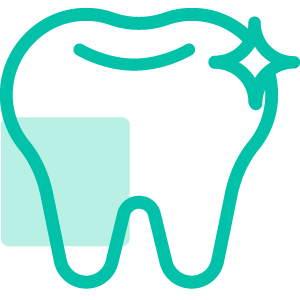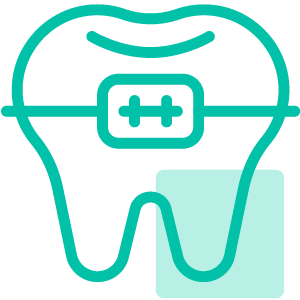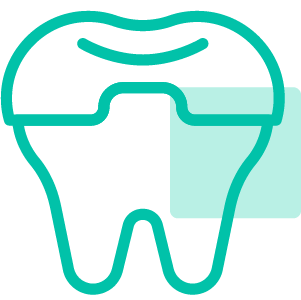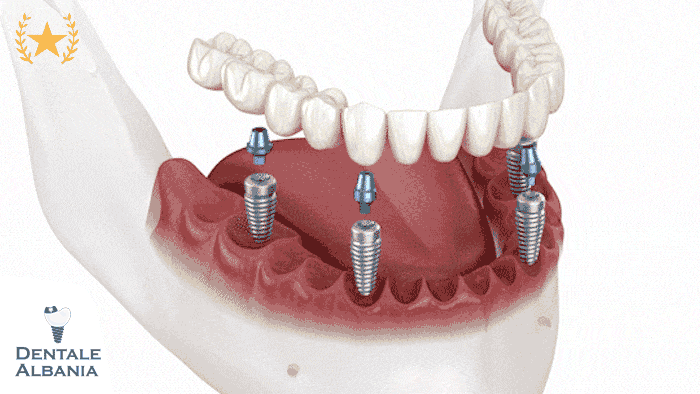What Is a Sinus Lift? Understanding the Basics of This Dental Procedure

- A sinus lift is a specialized dental surgery designed to make it possible for patients to receive dental implants in the upper jaw, especially in the area of the molars and premolars.
- The procedure is typically needed when there isn’t enough bone height in the upper jaw or when the sinuses are too close to the jaw for implants to be safely placed.
- During a sinus lift, a bone graft is inserted into the space between your upper jaw and the maxillary sinus, located on either side of your nose. This lifts the sinus membrane, creating more bone volume to support an implant.
- Maxillary sinuses are hollow, air-filled spaces in your skull. Over time, especially after tooth loss, these sinuses can expand, and your natural bone can shrink, making implants impossible without augmentation.
- The bone used in a sinus lift can come from your own body (autograft), from a human donor (allograft), an animal source like bovine (xenograft), or it can be synthetic.
- A sinus lift is usually performed by an oral or maxillofacial surgeon and is a well-established, routine procedure in implant dentistry.
What Is a Sinus Graft?
- A sinus graft refers specifically to the bone material placed into the sinus cavity during a sinus lift.
- While “sinus lift” describes the entire procedure, the “graft” is the critical step where the new bone material is added.
- The graft creates a foundation where dental implants can later be placed and integrated.
- Some professionals use the terms interchangeably, but technically, the sinus graft is part of the sinus lift process.
What Is Sinus Augmentation?
- “Sinus augmentation” is another term commonly used in medical and dental circles to describe a sinus lift.
- The word “augmentation” emphasizes the enhancement or building up of the bone in the sinus area.
- Whether referred to as a sinus lift or augmentation, the goal remains the same: create sufficient bone for implant placement.
What Is a Sinus Bump?
- “Sinus bump” is a more informal term that patients or some clinicians may use to describe the elevation or swelling of the sinus membrane.
- It typically refers to the minor and intentional lift of the sinus floor during the procedure, not a complication.
- It can also describe the sensation or appearance of swelling near the cheeks post-surgery, which is usually temporary.
What Is the Difference Between a Sinus Lift and a Bone Graft?
- A sinus lift is a specific type of bone grafting procedure performed in the upper jaw, particularly in the molar and premolar region, to prepare the area for dental implants.
- Not all bone grafts are sinus lifts — bone grafting can be done in various parts of the mouth, depending on where implants are needed.
- A sinus lift is unique because it involves lifting the sinus membrane to place bone material beneath it, while other bone grafts may simply add volume to thin jawbone.
- This procedure is necessary when the sinus floor is too low or bone height is insufficient for implants in the upper jaw.
- Both procedures aim to rebuild lost bone, but sinus lifts specifically deal with the anatomical challenge of the maxillary sinus.
Is a Sinus Lift the Same as a Bone Graft?
- While a sinus lift includes a bone graft, it’s more than just placing bone material.
- Sinus lifts also involve delicate manipulation of the sinus membrane, making it a more complex and localized form of grafting.
- General bone grafts may be done after tooth extraction or in other implant sites, while sinus lifts are limited to the posterior maxilla.
- A bone graft can be standalone or part of a sinus lift — your dentist or surgeon will determine which is needed based on CT scans and clinical assessment.
How Painful Is a Sinus Lift and What Should You Expect in Recovery?
- Sinus lift procedures are generally well tolerated and performed under local anaesthetic or conscious sedation.
- Most patients report that the surgery itself is not painful, though discomfort and swelling are expected afterward.
- Postoperative symptoms often include facial puffiness, pressure near the cheeks or nose, and mild to moderate soreness.
- The recovery period is typically 7–10 days before returning to normal routines, but the bone graft takes several months to fully integrate.
How Painful Is a Dental Sinus Lift?
- Most patients describe the procedure as no more painful than a tooth extraction, especially when sedation is used.
- The discomfort usually begins a few hours after surgery as the anaesthetic wears off, but it’s generally manageable with painkillers.
- Rarely, severe pain or complications occur, especially if post-op care instructions aren’t followed.
How Uncomfortable Is a Sinus Lift?
- Expect mild swelling, bruising, and sinus pressure for a few days after the surgery.
- There may be some discomfort when chewing or speaking, but it usually resolves quickly.
- Most discomfort peaks around day 2 or 3, then gradually improves with rest, ice packs, and anti-inflammatory medications.
How Painful Is Sinus Lift Recovery?
- Recovery is typically mild to moderate in terms of pain.
- OTC medications like ibuprofen or paracetamol are usually sufficient.
- If you experience sharp pain, excessive bleeding, or infection-like symptoms, it’s important to contact your surgeon.
How Long Will My Face Be Swollen After a Sinus Lift?
- Swelling is normal and usually lasts between 3 to 10 days.
- Ice packs in the first 48 hours and sleeping with your head elevated can minimize puffiness.
- Bruising may extend under the eye or down the neck but is typically cosmetic and temporary.
Will My Face Change After a Sinus Lift?
- No permanent changes to your facial appearance should occur.
- Temporary changes like puffiness or bruising are due to tissue manipulation, not bone alterations.
- The goal is to restore internal bone volume, not alter external facial features.
What Happens During a Sinus Lift Procedure?
- The sinus lift is a minor oral surgery typically performed by an oral surgeon or periodontist.
- The procedure starts with local anaesthetic or sedation to ensure you’re comfortable.
- A small incision is made in the gum tissue to expose the bone above your upper back teeth.
- The surgeon then creates a window in the bone to access the sinus cavity.
- The sinus membrane is gently lifted, and the empty space beneath it is filled with bone graft material.
- Finally, the gum tissue is stitched back into place, and healing begins.
Are You Awake During a Sinus Lift?
- Most patients are awake but numbed with local anaesthetic, and often given oral or IV sedation to feel relaxed.
- In some complex cases or for very anxious patients, general anaesthesia may be used.
- Being awake does not mean being uncomfortable — you won’t feel pain, only some pressure or vibration.
Can a Regular Dentist Do a Sinus Lift?
- While general dentists can place implants, sinus lifts are usually referred to specialists like oral surgeons or periodontists.
- This is because the sinus area is anatomically complex, and precision is key to avoid complications.
- A well-qualified dentist will refer you to the right specialist if a sinus lift is needed.
How Is a Sinus Lift Surgery Done?
- The most common techniques include:
- Lateral window technique: opening a small bony window on the side of the maxilla to lift the membrane.
- Crestal or osteotome technique: less invasive, often used when bone height is slightly more.
- Graft materials used can include:
- Autografts: bone from your own body (e.g. chin, hip)
- Allografts: processed human donor bone
- Xenografts: bovine (cow) bone — very common and safe
- Alloplasts: synthetic bone-like materials
- After placing the graft, the site is sutured and allowed to heal, usually over 4–9 months before implants are placed.
What Are the Risks or Complications of a Sinus Lift?

- Sinus lifts are safe and well-studied, but like any surgery, they carry some risks.
- Minor risks include swelling, bleeding, and temporary sinus discomfort.
- More serious but rare complications include sinus infections, graft failure, or damage to adjacent teeth.
- Careful planning and an experienced surgeon can greatly reduce these risks.
What Is the Most Common Complication of a Sinus Lift?
- The most frequent issue is perforation of the Schneiderian membrane, the thin lining of the sinus.
- If the membrane is torn, the surgeon may:
- Repair it with a collagen membrane
- Delay the grafting for a few months
- A small tear typically does not affect long-term success, especially if managed properly.
What Does a Failed Sinus Lift Feel Like?
- Warning signs may include:
- Persistent pain
- Swelling that worsens instead of improves
- Sinus pressure, congestion, or foul drainage
- A failed graft often results in inability to place the implant in the future without repeating the procedure.
What Are the Signs of a Failed Sinus Lift?
- Specific symptoms to watch for include:
- Non-healing or exposed bone
- Loose or mobile dental implants
- Sinus infections or fluid buildup
- If any of these occur, consult your surgeon immediately for evaluation.
What Is the Downside of a Sinus Lift?
- Downsides include:
- Extended treatment time (up to 9 months)
- Surgical risks and temporary discomfort
- Added cost on top of dental implants
- Despite these, a successful sinus lift allows for long-term stability of implants, especially in the upper jaw where bone is often lacking.
What Are the Risks or Complications of a Sinus Lift?
- While a sinus lift is a safe and commonly performed procedure, like all surgeries, it carries some risk.
- The most common complication is perforation of the sinus membrane (Schneiderian membrane), which can happen during the procedure.
- Other possible complications include:
- Infection at the surgical site
- Sinusitis (inflammation of the sinus lining)
- Swelling, bruising, or pain that may last longer than expected
- Bleeding from the mouth or nose
- Graft material displacement or failure to integrate with the natural bone
- Nerve irritation or temporary numbness in the gums or teeth
- Rarely, formation of an oroantral fistula, an abnormal connection between the mouth and sinus
- These risks can usually be minimized by choosing an experienced oral surgeon and following all post-operative care instructions.
What Is the Most Common Complication of a Sinus Lift?
- The most frequently encountered issue is perforation of the sinus membrane.
- This delicate lining can tear when the surgeon accesses or lifts it.
- If the tear is small, it can be repaired during the same procedure with a collagen membrane patch.
- If the tear is large, the procedure might need to be paused and repeated after healing (around 3–6 months).
- A healed membrane is usually thicker and more resilient, making the second attempt more likely to succeed.
What Does a Failed Sinus Lift Feel Like?
- A failed sinus lift may present as:
- Persistent pain or discomfort beyond 1–2 weeks
- Swelling that worsens or does not reduce
- Sinus pressure or congestion that feels unusual
- Foul smell or drainage from the nose or mouth
- Difficulty breathing through the nose
- If implants were placed at the same time, failure might also include:
- Loose or mobile implants
- Discomfort when chewing
- These are signs you should contact your surgeon immediately.
What Are the Signs of a Failed Sinus Lift?
- Early signs may include:
- Ongoing bleeding or bruising
- Pain that doesn’t improve with medication
- Sinus drainage or unusual fluid leaking from the surgical area
- Later signs might be:
- Sinus infections or recurring sinusitis
- The feeling that the graft hasn’t “taken” or that implants feel unstable
- Most complications can be resolved with prompt intervention, so monitoring your recovery is essential.
What Is the Downside of a Sinus Lift?
- The main disadvantages include:
- Invasiveness compared to other procedures
- A healing period of 4 to 9 months before dental implants can be placed (if not done simultaneously)
- Added cost, especially when done privately or with advanced materials
- Temporary discomfort and visible swelling or bruising, especially around the cheeks and eyes
- However, for patients lacking upper jawbone, a sinus lift often enables long-term success with dental implants, which may otherwise not be possible.
What Should You Avoid After a Sinus Lift Surgery?
- After a sinus lift, following the correct aftercare protocol is essential to ensure proper healing and avoid complications.
- Activities that increase pressure in your sinuses can risk disturbing the bone graft or causing the sinus membrane to rupture.
- Here’s what you should avoid and why:
What Happens If I Sneeze After Sinus Lift?
- Sneezing with force can rupture the sinus membrane or dislodge the graft material.
- If sneezing is unavoidable, do it with your mouth open to reduce sinus pressure.
- Take antihistamines if allergies are common for you and avoid dusty environments.
- If you sneeze forcefully and feel sudden pain or bleeding, contact your dentist or surgeon immediately.
What Happens If I Blew My Nose After a Sinus Lift?
- Blowing your nose too soon can force air into the surgical site and cause:
- Graft displacement
- Increased bleeding
- Membrane rupture
- You should avoid blowing your nose for at least 2 weeks, unless your dentist says otherwise.
- If you accidentally blow your nose, monitor for signs of complications, such as pain, swelling, or drainage.
What Are the Do’s and Don’ts After a Sinus Lift?
- Do’s:
- Take all prescribed antibiotics and painkillers.
- Use saline spray to keep nasal passages moist.
- Sleep with your head elevated to reduce swelling.
- Apply cold compresses for the first 48 hours to manage bruising and puffiness.
- Don’ts:
- Don’t blow your nose, smoke, or use straws.
- Avoid heavy lifting, bending over, or vigorous exercise for at least 10 days.
- Don’t eat very hot foods immediately after surgery, as they can increase blood flow to the area.
- Following these rules helps maximize healing and implant success.
How Do I Know If I Need a Sinus Lift Before Implants?
- Not everyone who needs dental implants in the upper jaw will require a sinus lift, but you might need one if there’s not enough bone height in the molar or premolar region.
- A CBCT scan (Cone Beam Computed Tomography) is the most accurate way to assess bone volume and sinus proximity.
- Your dentist or implant specialist will recommend a sinus lift if:
- You have 4mm or less of bone height in the upper jaw.
- The sinus floor has expanded downward into the space where implants are needed (a common effect of long-term tooth loss).
- There’s been bone loss due to gum disease or trauma.
- Your sinus is naturally low or large.
Is a Sinus Lift a Serious Procedure?
- While a sinus lift is a routine and commonly performed procedure, it’s still considered minor oral surgery.
- Most patients recover well and have minimal complications.
- It becomes “serious” only in the sense that it:
- Requires careful planning, imaging, and surgical precision.
- Involves healing time before the implant can be placed (unless done simultaneously).
- Must be performed by a qualified oral surgeon or periodontist.
What Will Happen If I Choose Not to Have a Sinus Lift Procedure?
- If you don’t have sufficient bone in the upper jaw and opt to skip a sinus lift:
- Your implants may not be stable and could eventually fail.
- You may have to resort to alternatives like removable dentures or zygomatic implants.
- Skipping the procedure when it’s medically advised might also lead to:
- Sinus complications, improper implant placement, or bone graft failure.
- The need for revision surgeries later.
- Always consult your dentist about all risks and individual suitability before deciding.
How Much Does a Sinus Lift Cost and Where Is It Cheaper?

- The cost of a sinus lift varies depending on geographic location, type of bone graft material used, surgeon’s expertise, and whether implants are placed at the same time.
- Prices also fluctuate based on whether the procedure is done in a private dental clinic or a hospital setting.
- Other cost factors include:
- The extent of bone loss.
- The need for advanced imaging (CT scans).
- Type of sedation or anaesthesia used.
How Much Does a Sinus Lift Cost in the UK?
- In the UK, a sinus lift can typically cost between £1,500 to £2,500 per side.
- The price may be higher if:
- High-quality bone graft material (like Bio-Oss® or autogenous grafts) is used.
- You require complex imaging or sedation.
- The procedure is done in specialist practices in central London or major cities.
How Much Does a Sinus Lift Cost in Albania?
For patients seeking high-quality dental care at affordable prices, Albania has become a popular destination — and sinus lift surgery is no exception. The cost of a sinus lift in Albania is considerably lower than in the UK or other Western European countries, without compromising on clinical standards, surgical expertise, or materials used.
Average Cost Range
In Albania, the average cost of a sinus lift procedure typically ranges between €400 and €800 per side. This price includes:
Consultation and diagnostics (including panoramic X-ray or CBCT scan)
Local anaesthesia or sedation
The sinus lift surgery itself (either lateral window or internal approach)
Bone graft material (usually bovine-derived Bio-Oss or synthetic graft)
Post-operative medication and follow-up appointments
This cost can vary depending on:
The complexity of the sinus lift (e.g., how much vertical height needs to be gained)
Whether the implants are placed simultaneously or in a separate procedure
The grafting material used (autologous bone, xenograft, or synthetic)
The clinic’s location, reputation, and the experience of the oral surgeon
Comparison with Other Countries
To put this into perspective:
In the UK, a sinus lift usually costs between £1,500 and £2,500
In Italy or Germany, prices range from €1,200 to €2,000
In Turkey, the average price is about €600 to €1,000
Albania offers one of the lowest prices in Europe for this procedure while maintaining international treatment standards. This makes it a highly attractive destination for dental tourism, particularly for patients who need multiple implants and bone augmentation procedures, which would otherwise be cost-prohibitive in their home country.
Additional Savings through Dental Tourism
Many clinics in Tirana and other Albanian cities offer comprehensive dental travel packages, which include:
Free or discounted consultations
Airport transfers and hotel accommodation
Translation services
Full treatment plan with transparent pricing
These packages allow international patients to combine high-quality dental treatment with a relaxing trip, all at a fraction of what they would pay at home.
In conclusion, if you’re considering dental implants and have been told you need a sinus lift, Albania is a cost-effective and professional option worth exploring.
How Expensive Is a Sinus Lift?
- While it might seem costly, the procedure is often worth the investment for long-term implant stability and functional tooth replacement.
- A sinus lift can actually be more cost-effective than trying to replace failed implants or dealing with ongoing denture problems.
- Compared to other oral surgeries, it falls into the moderate range in terms of cost and complexity.
How Much Is Sinus Lift in Turkey?
- Turkey is known for offering affordable dental implant packages, often including sinus lift procedures.
- The cost of a sinus lift in Turkey generally ranges from £600 to £1,000, often including consultations, imaging, and medications.
- Things to consider:
- Ensure the clinic is certified and well-reviewed.
- Account for travel expenses and potential follow-up visits.
- Some clinics offer package deals for implants + grafting, making it even more economical.
Are There Alternatives to a Sinus Lift for Dental Implants?
- Not all patients are ideal candidates for a sinus lift, and in some cases, alternatives may be safer, faster, or more suitable.
- Common alternatives include:
- Zygomatic implants – longer implants anchored in the cheekbone.
- Short dental implants – designed to fit into shallower bone without grafting.
- Bone expansion techniques – for cases where the bone is narrow but tall enough.
- These methods may reduce the need for invasive sinus surgery, though they are not always appropriate depending on individual bone anatomy.
What Is the Alternative to a Sinus Lift?
- Zygomatic implants bypass the maxillary sinus altogether by anchoring into the zygomatic bone.
- Bone expansion techniques widen a narrow ridge to make room for an implant without needing vertical height from a graft.
- In some cases, angled implants (used in All-on-4 or All-on-6 systems) can avoid the sinus cavity and eliminate the need for lifting.
Are Short Implants Better Than Sinus Lift?
- Short implants (usually less than 8mm) can sometimes be placed without a sinus lift if there’s just enough residual bone height.
- They reduce surgical risk and healing time, but:
- May have higher stress concentrations over time.
- Require dense bone for stability.
- Success rates are improving, but they’re often more suitable for non-load-bearing zones or patients with limited graft options.
What Alternatives Are Available?
- A summary of main sinus lift alternatives:
- Zygomatic implants – great for severe bone loss but require surgical expertise.
- Short implants – ideal for mild to moderate bone loss.
- Angled implants – used strategically in full arch restorations.
- Bone expansion – best when the ridge is narrow but high.
- Discuss each option with a dentist to determine the most appropriate personalized solution.
How Successful Is a Sinus Lift and How Long Does It Last?
- Sinus lift procedures have high success rates, making them a reliable option for patients needing implants in the upper jaw.
- Success depends on:
- Surgeon expertise
- Post-operative care
- Patient compliance
- Quality of bone graft materials
- When done properly and followed by sufficient healing, sinus lifts can support implants for decades or even a lifetime.
What Is the Success Rate of a Sinus Lift?
- Clinical studies report success rates between 90–95%, depending on patient health and technique used.
- Factors that improve success:
- Non-smokers
- Good oral hygiene
- No active sinus infections
- Adequate healing time before implant placement
- Membrane perforation, if managed well, doesn’t always lead to failure.
How Long Does a Sinus Lift Last?
- The bone graft material integrates with your natural bone over a few months.
- Once healed, the new bone behaves like your own and doesn’t degrade unless affected by infection or trauma.
- With good care and maintenance, a sinus lift can last a lifetime — providing a stable foundation for your implants.
Frequently Asked Questions About What Is a Sinus Lift
What Is the Difference Between a Sinus Lift and a Bone Graft?
- A sinus lift is a specific type of bone grafting procedure performed in the upper jaw (posterior maxilla) to make space for dental implants when there is insufficient bone height beneath the sinus cavity.
- A bone graft, in general, refers to the process of adding bone (or bone substitute) to any area of the jaw where bone is lacking — not just the upper jaw. Bone grafts can be performed in the lower jaw, around sockets, or in preparation for implants in other regions.
- In a sinus lift, the Schneiderian membrane (the lining of the sinus cavity) is gently elevated to create room for bone graft material to be inserted. This technique augments the sinus floor, making it possible to place implants securely in an area that would otherwise be too thin or hollow.
- Bone grafts may or may not involve sinus elevation. They can be used for ridge preservation after tooth extraction, socket grafts, or ridge expansion when the bone is too narrow.
- Not all bone grafts are sinus lifts, but all sinus lifts involve bone grafting as a core component. A sinus lift is essentially a targeted bone graft with the goal of modifying the sinus space.
- The choice between a standard bone graft and a sinus lift depends on the location of the missing tooth/teeth, the height and width of existing bone, and the type of dental implant being planned.
- Your dentist or oral surgeon will recommend the appropriate procedure after imaging (usually a CBCT scan) to assess your bone volume and sinus anatomy.
How Painful Is a Dental Sinus Lift?
- A dental sinus lift may sound intimidating, but most patients report minimal pain or discomfort during and after the procedure. This is largely thanks to the use of local anaesthesia and, in some cases, conscious sedation, which ensures you don’t feel any pain during surgery.
- During the procedure, your surgeon will numb the area thoroughly, and you may also be given oral or IV sedation to help you stay calm and relaxed. Some patients are fully awake but comfortable; others may be in a light sleep state, depending on the sedation option.
- After the sinus lift, it’s normal to experience mild to moderate discomfort for a few days. This may include:
- Swelling in the cheeks or under the eyes
- A feeling of pressure or fullness near the sinus area
- Mild pain at the surgical site
- Pain is typically well managed with over-the-counter painkillers such as ibuprofen or paracetamol. In some cases, your surgeon may prescribe a stronger pain reliever, especially if more extensive work was done.
- Compared to procedures like wisdom tooth extraction or full dental implant surgery, sinus lift discomfort is generally less intense and short-lived.
- Most patients return to light daily activities within 24–48 hours, and swelling usually subsides within a week.
- If pain increases over time, is sharp or severe, or is accompanied by fever or foul-smelling drainage, this could indicate a complication such as infection or graft failure — in which case you should contact your dentist or surgeon immediately.
- Overall, the sinus lift procedure is considered low on the pain scale, especially when performed by an experienced oral surgeon, and most patients are surprised by how manageable the recovery is.









